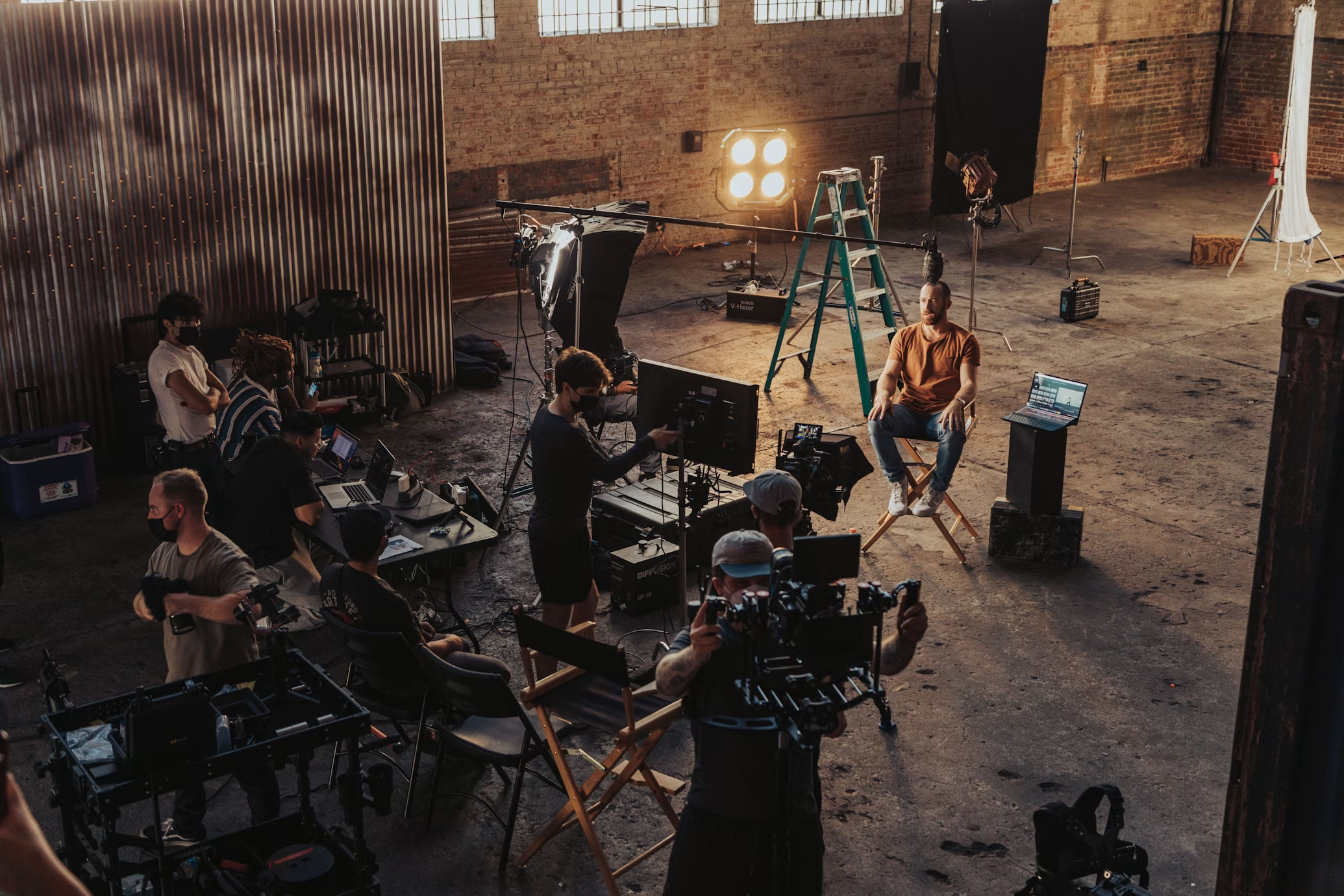2: Affordances
- Page ID
- 241760
\( \newcommand{\vecs}[1]{\overset { \scriptstyle \rightharpoonup} {\mathbf{#1}} } \)
\( \newcommand{\vecd}[1]{\overset{-\!-\!\rightharpoonup}{\vphantom{a}\smash {#1}}} \)
\( \newcommand{\id}{\mathrm{id}}\) \( \newcommand{\Span}{\mathrm{span}}\)
( \newcommand{\kernel}{\mathrm{null}\,}\) \( \newcommand{\range}{\mathrm{range}\,}\)
\( \newcommand{\RealPart}{\mathrm{Re}}\) \( \newcommand{\ImaginaryPart}{\mathrm{Im}}\)
\( \newcommand{\Argument}{\mathrm{Arg}}\) \( \newcommand{\norm}[1]{\| #1 \|}\)
\( \newcommand{\inner}[2]{\langle #1, #2 \rangle}\)
\( \newcommand{\Span}{\mathrm{span}}\)
\( \newcommand{\id}{\mathrm{id}}\)
\( \newcommand{\Span}{\mathrm{span}}\)
\( \newcommand{\kernel}{\mathrm{null}\,}\)
\( \newcommand{\range}{\mathrm{range}\,}\)
\( \newcommand{\RealPart}{\mathrm{Re}}\)
\( \newcommand{\ImaginaryPart}{\mathrm{Im}}\)
\( \newcommand{\Argument}{\mathrm{Arg}}\)
\( \newcommand{\norm}[1]{\| #1 \|}\)
\( \newcommand{\inner}[2]{\langle #1, #2 \rangle}\)
\( \newcommand{\Span}{\mathrm{span}}\) \( \newcommand{\AA}{\unicode[.8,0]{x212B}}\)
\( \newcommand{\vectorA}[1]{\vec{#1}} % arrow\)
\( \newcommand{\vectorAt}[1]{\vec{\text{#1}}} % arrow\)
\( \newcommand{\vectorB}[1]{\overset { \scriptstyle \rightharpoonup} {\mathbf{#1}} } \)
\( \newcommand{\vectorC}[1]{\textbf{#1}} \)
\( \newcommand{\vectorD}[1]{\overrightarrow{#1}} \)
\( \newcommand{\vectorDt}[1]{\overrightarrow{\text{#1}}} \)
\( \newcommand{\vectE}[1]{\overset{-\!-\!\rightharpoonup}{\vphantom{a}\smash{\mathbf {#1}}}} \)
\( \newcommand{\vecs}[1]{\overset { \scriptstyle \rightharpoonup} {\mathbf{#1}} } \)
\( \newcommand{\vecd}[1]{\overset{-\!-\!\rightharpoonup}{\vphantom{a}\smash {#1}}} \)
\(\newcommand{\avec}{\mathbf a}\) \(\newcommand{\bvec}{\mathbf b}\) \(\newcommand{\cvec}{\mathbf c}\) \(\newcommand{\dvec}{\mathbf d}\) \(\newcommand{\dtil}{\widetilde{\mathbf d}}\) \(\newcommand{\evec}{\mathbf e}\) \(\newcommand{\fvec}{\mathbf f}\) \(\newcommand{\nvec}{\mathbf n}\) \(\newcommand{\pvec}{\mathbf p}\) \(\newcommand{\qvec}{\mathbf q}\) \(\newcommand{\svec}{\mathbf s}\) \(\newcommand{\tvec}{\mathbf t}\) \(\newcommand{\uvec}{\mathbf u}\) \(\newcommand{\vvec}{\mathbf v}\) \(\newcommand{\wvec}{\mathbf w}\) \(\newcommand{\xvec}{\mathbf x}\) \(\newcommand{\yvec}{\mathbf y}\) \(\newcommand{\zvec}{\mathbf z}\) \(\newcommand{\rvec}{\mathbf r}\) \(\newcommand{\mvec}{\mathbf m}\) \(\newcommand{\zerovec}{\mathbf 0}\) \(\newcommand{\onevec}{\mathbf 1}\) \(\newcommand{\real}{\mathbb R}\) \(\newcommand{\twovec}[2]{\left[\begin{array}{r}#1 \\ #2 \end{array}\right]}\) \(\newcommand{\ctwovec}[2]{\left[\begin{array}{c}#1 \\ #2 \end{array}\right]}\) \(\newcommand{\threevec}[3]{\left[\begin{array}{r}#1 \\ #2 \\ #3 \end{array}\right]}\) \(\newcommand{\cthreevec}[3]{\left[\begin{array}{c}#1 \\ #2 \\ #3 \end{array}\right]}\) \(\newcommand{\fourvec}[4]{\left[\begin{array}{r}#1 \\ #2 \\ #3 \\ #4 \end{array}\right]}\) \(\newcommand{\cfourvec}[4]{\left[\begin{array}{c}#1 \\ #2 \\ #3 \\ #4 \end{array}\right]}\) \(\newcommand{\fivevec}[5]{\left[\begin{array}{r}#1 \\ #2 \\ #3 \\ #4 \\ #5 \\ \end{array}\right]}\) \(\newcommand{\cfivevec}[5]{\left[\begin{array}{c}#1 \\ #2 \\ #3 \\ #4 \\ #5 \\ \end{array}\right]}\) \(\newcommand{\mattwo}[4]{\left[\begin{array}{rr}#1 \amp #2 \\ #3 \amp #4 \\ \end{array}\right]}\) \(\newcommand{\laspan}[1]{\text{Span}\{#1\}}\) \(\newcommand{\bcal}{\cal B}\) \(\newcommand{\ccal}{\cal C}\) \(\newcommand{\scal}{\cal S}\) \(\newcommand{\wcal}{\cal W}\) \(\newcommand{\ecal}{\cal E}\) \(\newcommand{\coords}[2]{\left\{#1\right\}_{#2}}\) \(\newcommand{\gray}[1]{\color{gray}{#1}}\) \(\newcommand{\lgray}[1]{\color{lightgray}{#1}}\) \(\newcommand{\rank}{\operatorname{rank}}\) \(\newcommand{\row}{\text{Row}}\) \(\newcommand{\col}{\text{Col}}\) \(\renewcommand{\row}{\text{Row}}\) \(\newcommand{\nul}{\text{Nul}}\) \(\newcommand{\var}{\text{Var}}\) \(\newcommand{\corr}{\text{corr}}\) \(\newcommand{\len}[1]{\left|#1\right|}\) \(\newcommand{\bbar}{\overline{\bvec}}\) \(\newcommand{\bhat}{\widehat{\bvec}}\) \(\newcommand{\bperp}{\bvec^\perp}\) \(\newcommand{\xhat}{\widehat{\xvec}}\) \(\newcommand{\vhat}{\widehat{\vvec}}\) \(\newcommand{\uhat}{\widehat{\uvec}}\) \(\newcommand{\what}{\widehat{\wvec}}\) \(\newcommand{\Sighat}{\widehat{\Sigma}}\) \(\newcommand{\lt}{<}\) \(\newcommand{\gt}{>}\) \(\newcommand{\amp}{&}\) \(\definecolor{fillinmathshade}{gray}{0.9}\)Affordances refers to the advantages of different communication modes, technologies, platforms, and media. Truly, there is no “master” mode of communication, and our audiences are always changing. The experience offered to us from reading a book does not equate to the emotional quality of watching a film, and playing a video game provides an unmatched immersive experience. When making rhetorical choices, however, it is important also to consider constraints—that is, a limitation or restriction on your purpose for writing. In the context of writing and rhetoric, we must carefully consider affordances, constraints, and the accessibility of our writing to different audiences.
History of Affordances
According to the Oxford English Dictionary, the term “affordance” was coined in 1966 by James J. Gibson, a psychologist who specialized in visual perception. The concept has since been used in fields related to design (object design, user interface, and the like). Donald Norman is credited with bringing it to theories about the design of objects. The 'eared' teacup is a good example of how design can be shaped by attention to affordances. Have you ever noticed that the teacup handle implies how you should use the object? The handle is specifically designed to inform your actions: it is the right size for fingers to go through and it protects you from the heat of your recently steeped drink. But this is not the universal symbol for the teacup.

Figure \(\PageIndex{1}\): Gaiwan Teacup (Copyright; Ryu Orn via Unsplash)
Consider the Gaiwan teacup (lid-bowl tea) originally designed during the reign of the Ming dynasty in China, the country that happens to be the top tea exporter in the world today. This teacup has no “ears” and its affordances can seem unusual to people who have never used it. A small lid covers the cup to control the flow of tea; this lid also serves to signal waiters if more tea is needed or if the patron is satiated. Likewise, affordances are not universal, and we must consider the cultural, religious, physical, and social diversity of our audiences to maximize the effectiveness of our communication and avoid exclusionary rhetorical situations.
Affordances Today
Game designers must utilize the concept of affordances because they are creating immersive fictional worlds while also trying, implicitly or explicitly, to inform players how to navigate those worlds. Game designers use shape, color, light, movement, sound, and even recognizable gaming tropes, to help players understand the fictional world.
Affordances are also influenced by the user’s familiarity with the mode, genre, or form of communication. For seasoned gamers, the controller’s mapping, the possibilities of the video game, and the different cues are implicitly understood from years of experience and usage. When non-gamers are exposed to video games, they need training in the interactive language of video games as well as the affordances of the specific game they are playing.

Brian Block, a Columbia College game design graduate, offers insight into the way game designers think about affordances. Block explains how some design elements that game designers use repeatedly have become a part of the communicative framework for games, a kind of language. Players know that red barrels usually explode and that doors with shiny handles can be opened. However, every video game is different, and every player has varying levels of familiarity with each game. Games therefore usually default to a tutorial segment that gives every player an introduction to the mechanics available to them in the game. Subsequently, every new mechanic that the player unlocks tends to be followed by a small tutorial, creating affordances.
Broadening the Concept
“An affordance is, in essence, an action possibility in the relation between user and object.” (Interaction Design Foundation).
When we think about the properties of objects and the agents that are using objects, we formulate a more inclusive definition of affordances. When designing objects or considering rhetorical situations, we must understand that affordances are only accessible to those who understand and can use them effectively. A simple example of this definition is the following: The affordance of a doorknob is lost on a child who is too short to reach the doorknob, even if the child knows what the doorknob is used for. The emotions that you seek to elicit from profound dialogue in your film will not reach your deaf audience without closed captions or an interpreter, or both. Therefore, it is wise to consider affordances in the context of accessibility, diversity, and inclusion.
Think about it this way: Have you ever invited friends to play card games? Imagine you are all sitting in a circle, and you decide to start playing a new game with everyone. The first thing you must do is give everyone a rundown of the rules. When you explain how the game is played, you give your friends the affordance to play the game. And after the first few mock rounds, the game is ready to go full swing as the newly acquired rules fade into the background. Game designer Brian Block agrees, suggesting that if you don’t notice the rules when you’re playing the game, then the game designer has done his, her, or their job well.

Just as game designers rely on the concept of affordances to communicate necessary information about a complicated world, so too do we all need to consider affordances as we approach any rhetorical task. Affordances exist in the relationship between the object and the user, the text and the reader, the film and the audience, the game and the player, etc. Therefore, it is not only our job as writers and rhetoricians to understand the best mode of communication. It is also essential for us to identify the most accessible, diverse, and inclusive modes when we participate in rhetorical situations.
Affordances and Other Concepts
Communicating a message involves affordances and a range of other interrelated principles. The key concepts shared in this book should be seen as a functional whole rather than a collage of unrelated ideas. For instance, think of the affordance of genre when you are writing your screenplay. How does a horror film convey ideas about mental health (We Need to Talk about Kevin), abortion rights (Rosemary’s Baby), or other political concerns in a way that a comedy film does not—and vice versa? Always remember that different platforms have different circulation strengths and weaknesses. Think about the strengths of X (formerly Twitter, a text-based social media) and its constraints, and compare these affordances to Instagram (image/video social media) and you will start to notice that each application can have its potential maximized in different rhetorical situations. For example, you should plan to release a small statement about your upcoming musical album on X/Twitter while also sharing a short video teaser with your fans on Instagram or TikTok.
For generations, alphabetic text had been used as the dominant mode of communication in Western culture. It had been the mode in which the state and the church conducted their (sometimes controversial) affairs (economics, religion, politics). However, Gunther Kress and Theo van Leeuwen argue that there may be a weakening of the assumption that alphabetic text is preferable and an increasing reliance on image in our culture (16-17). The material affordances of alphabetic texts are changing in response to technological advancement, with traditional forms of writing changing rapidly in a digital culture that accelerates constantly toward greater stimulation and profit. Smart communicators therefore consider kairos along with the affordances available in any rhetorical situation, taking note of the sociological, economical, and historical factors affecting the communicative task. What is the most effective medium of communication as you read this? How might image and alphabetic text combine? What are the most useful ways to share your newest creative endeavor today?
Looking Ahead
Some classes designed around writing and rhetoric can be likened to a semester-long intellectual conversation. Think of these classes as a journey in which teachers and students explore multiple social, political, and aesthetic issues. When we consider classrooms to be spaces for dialogue with others, we search for effective, inclusive ways to expand that dialogue. Hopefully, what we learn in writing classes prepares us not just for the next 200-300 level class. Your writing skills will serve you well in many other classes because writing enables you to synthesize different courses by connecting different topics and drawing students into dialogue. One of the central affordances of conversation in a classroom is capacity to facilitate collaboration. When we participate in a classroom, we contribute our own skills and share in the strengths offered by our classmates.
The film industry illustrates the affordance of labor division. Film crews include numerous departments: Production, Assistant Director, Camera, Grip, Electric, Hair and Makeup, Costumes and Wardrobe, Catering, Special Effects, Stunts. Within these larger groups, specific crew positions require specialized expertise. Crew members contribute their hard work, time, and expertise to make a film possible. Actors and directors may receive the bulk of the awards at ceremonies, but without the entire crew, no creative vision can come to life. Collaboration allows any creative community to maximize its collective potential.

Affordances in AI-Assisted Writing
We are not yet at the juncture where AI-assisted writing is an essential skill for the workplace, but that day may arrive soon. With the rise of LLM (Large Language Models) and other AI tools that have the potential both to aid and hinder students’ and workers’ thinking and writing, it is imperative to revise and study what these machines can offer us: What are their affordances and what are their drawbacks? How do we maximize our creative potential by collaborating with these language models? How do we make sure that we are not foregoing the necessity of creative and critical thinking by allowing the machines to do the work for us?
Remember, abusing an affordance can have detrimental effects on learning outcomes. Through the learning process, writing must be examined from a technical, critical, and socio-political standpoint. Art is not just made because it is beautiful; art is meant to catalyze change and have an impact on the world around us. Although there is much more to unravel from the Pandora’s Box that is AI, it is primarily important to recognize that the use of AI will be communicated differently depending on the class objectives, the instructor’s expectations, and the learning outcomes of each class.
In an MIT article titled “Advice Concerning the Increase in AI-Assisted Writing,” Edward Schiappa and Nick Montfort (professors of rhetoric and digital media, respectively), talk about the relationship between AI, LLMs, and learning objectives: “It may be that the use of a system like ChatGPT is not only acceptable to you but is integrated into the subject, and should be required. One of us taught a course dealing with digital media and writing last semester in which students were assigned to computer-generate a paper using a freely available LLM.” Although this article is directed at instructors and offering them advice on building classes that either engage with LLMs or stray away from them, it is essential for you as a student to make the most of each class by understanding the goals and objectives you are meant to achieve at the end of the semester. For example, classes that are focused on the study of contemporary digital media and other forms of post-modern writing could require you to use LLMs to sharpen your understanding of such tools. Other classes that are writing/communication intensive might demand that you produce the work on your own without leaning on the help of language models. Always remember that the affordances of an object are dependent on the relationship with the user. Considering this concept with a machine that is constantly learning creates an even deeper understanding of affordances. Large Language Models and AI chatbots are constantly evolving. Therefore, the affordances of such machines will be in constant and tremendous flux. So, remember to inform yourself and to stay up to date, to learn the rules, and to use these machines ethically.
Writing with Affordances
Picture this scenario:
You have been tasked with bringing a project to life. Your client, the Lincoln Square Chamber of Commerce, is asking you to advertise and build a buzz for an upcoming music festival in the city. The members of the Chamber see great potential in your unique approach to marketing. They have trusted you with a budget of $15,000. They are allowing you to hire whomever you want for the advertising team.
Consider these options to start the brainstorming process, and feel free to mix and match more than one option. Make sure you explain the reasoning behind your choice (Audience, Affordance, Constraint, Circulation, Alphabetic Text, Image, and so forth). Obviously, you want to keep in mind that you are tied to a budget, so for the sake of this exercise, you are allowed a maximum of three options. You can choose the options I present to you, come up with your own, or both.
A. Graphic Designer: Hire a designer to create a flyer for the music festival.
B. Guerilla Marketing: Hire a team of people who go around the city putting up different flyers on light posts, storefronts, coffee shops, and so forth.
C. Social Media Marketing: Hire a social media content creator to raise awareness about the music festival on multiple platforms.
D. Filmmaking Crew: Hire a crew to shoot video content that shows all the activities and vendors that will be available to festival goers.
E. Radio Advertising: Pay a radio channel to advertise the upcoming music festival.
Works Cited
“affordance, n., sense 2”. Oxford English Dictionary. Oxford University Press, July 2023, doi: 10.1093/OED/8091530968.
Block, Brian. Personal Interview. 12 February 2015.
Bustrillos, Clint. Red dragon action figure on table. 2019. Unsplash, unsplash.com/photos/red-dragon-action-figure-on-table-X-A-LJVAhzk.
De Leon, Andrew. Tifa from Overwatch. 2018. Unsplash, unsplash.com/photos/tifa-from-overwatch--uWiIajRN0s.
Gibson, James J. (James Jerome). The Senses Considered as Perceptual Systems. Houghton Mifflin, 1966.
Interaction Design Foundation - IxDF. “What are Affordances?” Interaction Design Foundation - IxDF. 7 Dec. 2023, www.interaction-design.org/literature/topics/affordances.
Kress, Gunther, and Theo van Leeuwen. Reading Images: The Grammar of Visual Design. 2nd edition. Routledge, 2006.
Norman, Donald A. The Psychology of Everyday Things. Basic Books, 1988.
Om, Ryu. White ceramic cup on white tissue paper. 2020. Unsplash, unsplash.com/photos/white-ceramic-cup-on-white-tissue-paper-uM3Wiejmvts.
Owens, Jakob. A group of people standing around a camera set up. 2021. Unsplash, unsplash.com/photos/a-group-of-people-standing-around-a-camera-set-up-xKfS7Hll0Ck.
Schiappa, Edward, and Nick Montfort. “Advice Concerning the Increase in AI-Assisted Writing.” Nickm.com, 10 Jan 2023, nickm.com/schiappa_montfort/ai_advice_2023-01-10.pdf.

